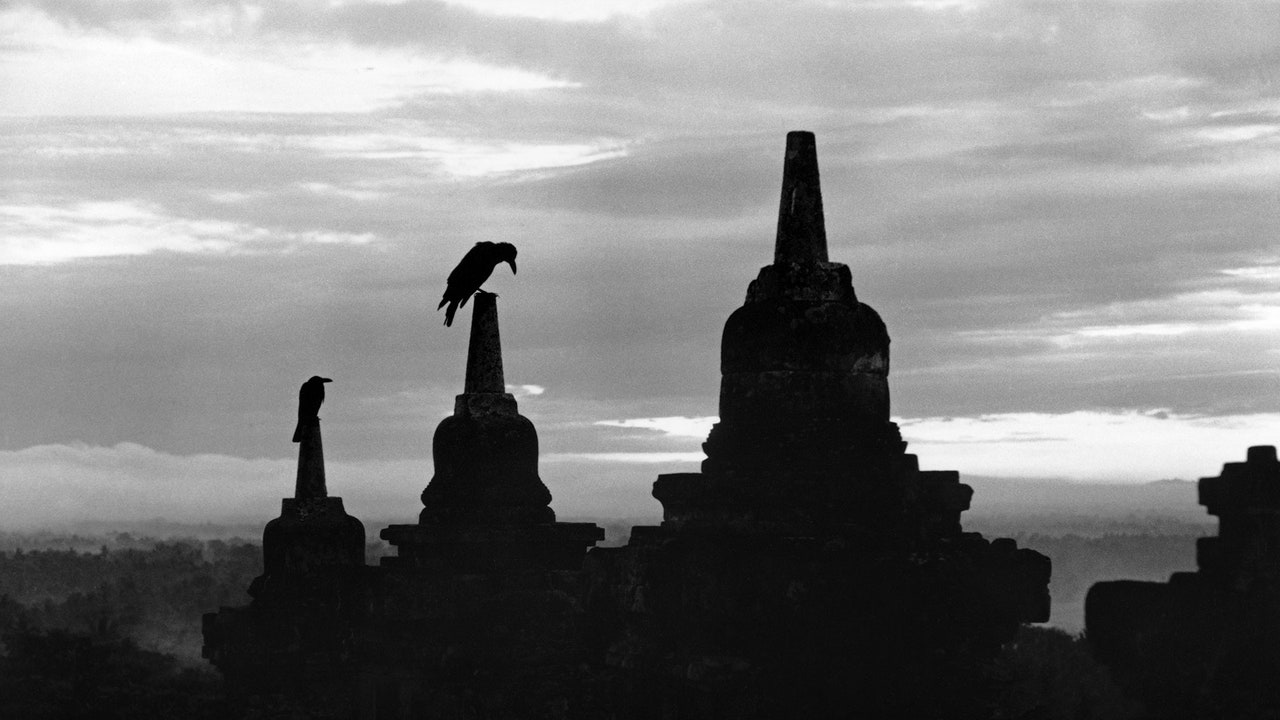“When you’re reading a novel like mine,” Eka Kurniawan said last month, over coffee, you’re reading “a joke about history.” We were at a hotel in Melbourne. Kurniawan was in town for the Melbourne Writers Festival, his first stop on a global publicity tour for his novels “Man Tiger” and “Beauty Is a Wound,” which have just been translated into English. The latter novel, an arresting portrait of Indonesia’s struggle for nationhood, delights in obscenity: no topic is spared from its bloodthirsty brand of satire. His dark sense of humor emerges even when he writes about the hundreds of thousands of people killed in the anti-Communist purge, of 1965. Kurniawan said he did not want to show them as “merely the victims and the oppressed.”
“Beauty Is a Wound,” set in the fictional coastal town of Halimunda, spans more than half a century. It revolves around Dewi Ayu, a wily prostitute of mythical beauty who has risen from the dead, and her accursed daughters, who are subjected to violence on a daily basis. Despite its darkness, the book is playful and spirited, paying homage to the Indonesian form of wayang, or shadow puppetry, which is often used in the retelling of Hindu epics, such as the Ramayana and Mahabharata. Dewi Ayu acts out wayang episodes of the Mahabharata to entertain children at a prison camp, while Halimunda’s “most hated granny” takes in an abandoned baby and names him Bima, after the tales’ wrathful and mighty Hindu prince. The women in “Beauty Is a Wound” are vividly drawn, while the men—among them, a lovelorn bully bent on revenge, a once-feted Japanese soldier turned rapist, and a heartbroken Communist—feel secondary. Mostly, they are pathetic creatures, imprisoned by sexual desire.
Kurniawan is an ardent fan of Indonesian pulp fiction and the gothic romance novels called sastra picisan, dime novels known for their lurid style. “When I started to write the novel,” he said, “I wanted to write a ghost story. I really loved ghost novels, horror novels, martial arts novels.” He is also transfixed by his country’s haunted past. “Beauty Is a Wound” chronicles Indonesia’s occupation by the Japanese during the Second World War; its bloody struggle with the Dutch, who attempted to reassert their control over Indonesia after the war; the massacres of the mid-sixties; the violence and corruption that marked Suharto’s New Order regime; and the nation’s anxious lurch toward self-determination after Suharto’s leadership crumbled, in 1998.
For decades, Indonesia’s deepest traumas were largely beyond acknowledgement, let alone contemplation. The mass killings of fifty years ago remain an exposed nerve in the country’s body politic: the label “Communist” is still used to smear political opponents, and Suharto’s cronies still occupy positions of financial and political power. But, in recent years, a growing number of voices within Indonesia have emerged to dispute the official version of history—and Joshua Oppenheimer’s documentaries “The Act of Killing” (2012) and “The Look of Silence” (2014) have thrust the massacre and its legacy into the spotlight around the world. (The films never had a formal theatrical release in Indonesia; the majority of Indonesians who were part of the film crews chose to remain anonymous.)
The supernatural forces that animate “Beauty Is a Wound” make metaphorical sense, but restless spirits are more than metaphors for many Indonesians. In the years leading up to the fall, and, later, the death, of Suharto, spiritualists pointed to portents of his demise: his mentor, a mystic, had died four months before he lost power, and, during his final illness, landslides disturbed an area near the resting place of his wife. In 2009, during a presidential campaign, then incumbent Susilo Bambang Yudhoyono claimed that his political rivals had used sorcery to undermine him. In 2013, some parliamentarians pushed to redraft the criminal code so that black magic would be punishable under the law. The push is ongoing.
Kurniawan employs an array of registers in “Beauty Is a Wound.” The narrator’s voice ranges from merciless and brusque to tender and doleful. One of the men is terrorized by the ghosts of slaughtered Communists, who make him “think that he was making love to his wife” when, in fact, “he was fucking the toilet hole.” Scenes of brutality—of rape, incest, bestiality—are undercut by macabre humor. Dewi Ayu’s eldest daughter, Alamanda, is in love with Kliwon, her childhood sweetheart, but she is forced to marry the Japanese soldier Shodancho, twenty years her senior, who drugs and rapes her. Alamanda buys an impenetrable “anti-terror garment” that transforms her underwear into a literal iron fortress.
Kurniawan creates, in the book, a new date for Indonesian independence: it is commemorated by the residents of Halimunda on September 23rd, five weeks after Indonesia’s official independence day. Truth, for Kurniawan, does not spring from a singular revelation but from a patchwork of agonistic narratives. The “literature establishment” in Indonesia tends to take “a didactic approach” to books, he said, which may explain why “Beauty Is a Wound” was not well received when it was first published, in 2002. Many critics, he said, “didn’t know if it was an absurd work, realism—they could not name it. They thought maybe it was just a failed novel.” He told the audience at the Melbourne Writers Festival that one still finds the attitude, among some Indonesian readers, that if a character is Communist, “it’s all right for that character to die. I wanted to write something in my novel where the Communist is a hero, but without glorification.”
